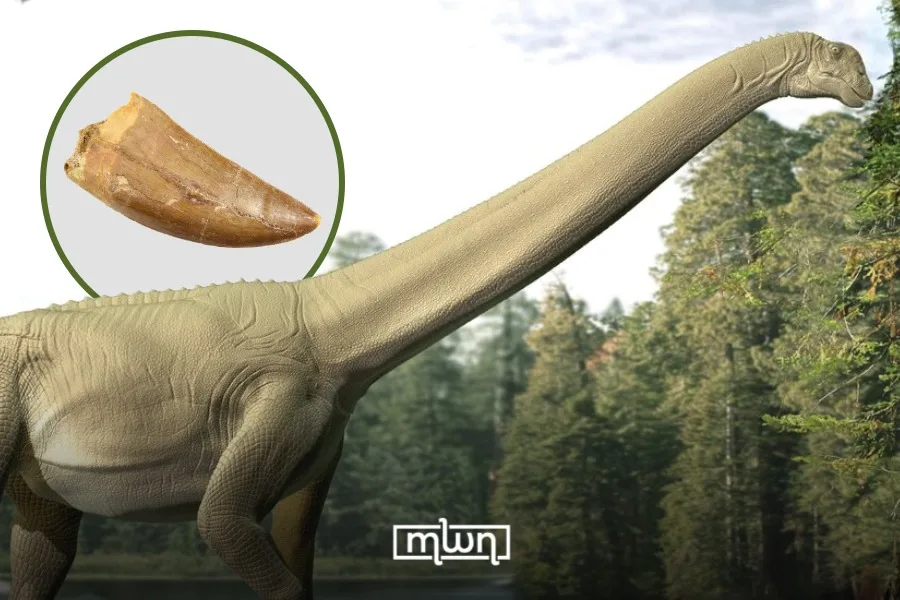Three fossilized teeth discovered near Boulemane are rewriting Africa’s Jurassic history.
Fez– Morocco’s Middle Atlas Mountains have just revealed another prehistoric treasure. A team of Moroccan and international researchers has uncovered three fossilized teeth from colossal plant-eating dinosaurs that lived roughly 168 to 166 million years ago during the Middle Jurassic Bathonian stage.
The find provides the first confirmed evidence of Turiasauria — an ancient group of sauropods — ever recorded in Africa.
Turiasauria dinosaurs were distant cousins of the more advanced neo-sauropods that appeared later in Earth’s history.
These gentle giants are known for their distinctive teeth, crowned with heart-shaped edges, a trait clearly visible in the fossils now identified from Morocco.
The researchers also noted that the Moroccan specimens differ from European representatives of the group, such as Turiasaurus riodevensis, hinting at unique evolutionary branches within this family of giants.
The teeth were found in the El Mers III Formation, a geological layer in the Middle Atlas that has long been a magnet for paleontologists.
This region has already produced major discoveries, including Atlasaurus Imelakei, one of the largest sauropods known, and preserved dinosaur trackways that capture moments from the lives of creatures that walked here more than 160 million years ago.
What makes this latest discovery so significant is its ability to reshape the picture of dinosaur life in North Africa during the Jurassic period.
Until now, no definitive fossils of Turiasauria had ever been documented on the continent.
Their presence in Morocco confirms that these massive, long-necked herbivores roamed much farther than previously thought, adding an important piece to the global puzzle of sauropod evolution and migration.
The implications reach far beyond three isolated teeth. By proving that Turiasauria lived in North Africa, the discovery paves the way for further exploration of Morocco’s fossil-rich landscapes.
If these giants once thrived here, chances are that more skeletal remains, not just teeth, lie hidden in the rock, waiting to tell a fuller story of how these ancient herbivores evolved before the appearance of their more advanced relatives.
The El Mers III Formation itself is now poised to gain even more attention. Already a landmark site for studying Middle Jurassic ecosystems, it offers paleontologists a rare window into an era when dinosaurs were diversifying rapidly across the supercontinent of Pangaea.
Each new find helps map how these ecosystems functioned, how species migrated, and how climatic and geological changes shaped their world.
In essence, these teeth are far more than fossilized fragments. They are solid proof that Africa played a role in the early history of some of the largest land animals ever to exist.
For Morocco, which is fast becoming one of the world’s most important sources of dinosaur discoveries, this marks yet another chapter in a story written not in ink, but in stone, a story buried for millions of years beneath the Middle Atlas and now coming to light.
















